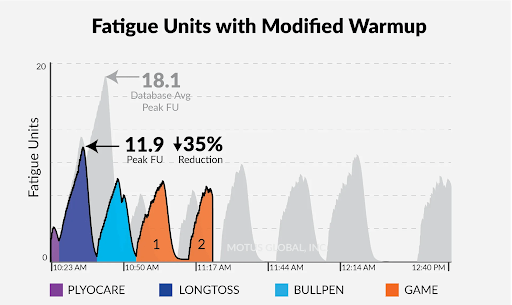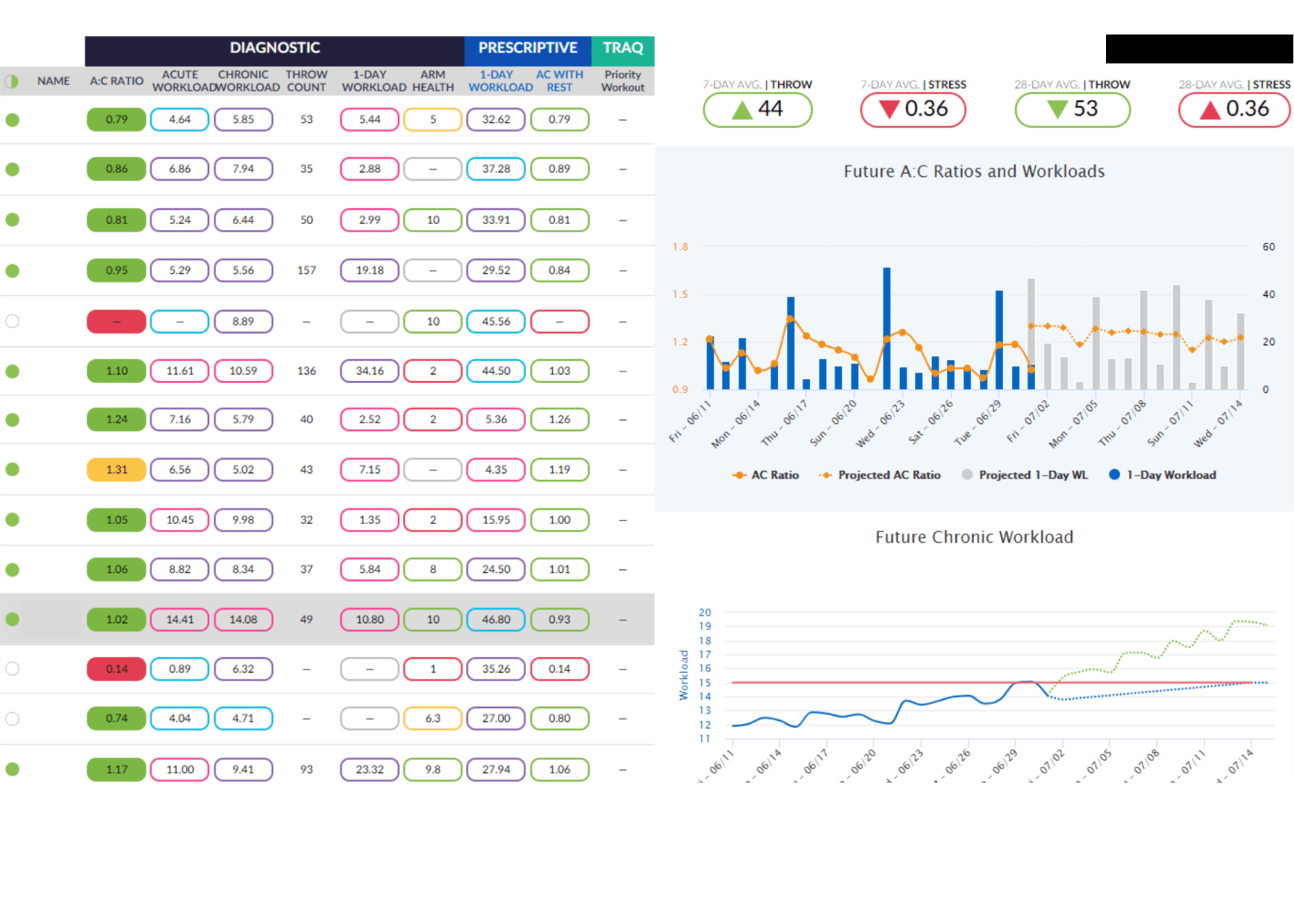How the Cincinnati Reds Used PULSE to More Effectively Manage Their Pitching Staff

Written by Joe Marsh
This blog is the third post in our series of blogs highlighting successful implementations of PULSE. You can check out the first blog here.
This one will focus on how Kyle Boddy (yes, the founder of Driveline) implemented PULSE with the Reds this past year.
Becoming the Director of Pitching for the Reds meant that Boddy was responsible for every pitcher, and every pitching coach in the Reds minor league system.
In particular, Boddy knew he could refine how pitchers were managed and used during the season. Typical innings and pitch counts don’t actually capture if a pitcher is really ready to throw – and Boddy knew that PULSE could be the solution.
He began implementing PULSE throughout the organization with the help of the man in our last blog — Bryan Conger, Boddy’s pitching coordinator.
Optimizing Pregame Routines
The first way Boddy and the Reds were able to leverage PULSE was by managing fatigue in their pitchers’ pregame routines.
Boddy noticed that his starting pitchers were typically gassed by the time they were ready to throw on the mound in a game. They would rip through warmups, Plyo Ball ®, long toss, and their pre-game bullpen one after the other and then go straight into the game. This would lead to more fatigue, more missed pitches, more walks, and more runs surrendered in the first innings of games.
Using PULSE, Bryan Conger noticed that their fatigue units — a live measure of a pitcher’s fatigue — during their pregame routine would be through the roof, and certainly well above the recommended threshold.
Fatigue units are modelled to evaluate the effects of forces, cycle times, and postures on muscle fatigue during repetitive tasks, like throwing. They create a better representation of the fatigue that a pitcher accrues compared to inning or pitch counts. A full blog detailing fatigue units can be found here.
At Conger’s suggestion, Boddy decided to implement Conger’s idea: Regulate the pregame routines of their pitchers by mandating 3 minute breaks between each phase of their throwing program: Plyo Ball ®/weighted ball work, longtoss, pregame bullpen, and finally, the game.
They noticed their pitchers were actually looking fresh when going into the game and, more importantly, walks and runs went down in their first inning.
There’s also a natural pairing between fatigue units and heart rate that is currently being investigated. By pairing heart rate data and other recovery-based metrics with PULSE and fatigue units, Boddy and the Reds hope to have the full picture of how ready their pitchers are to throw, and how they recover.
Managing Starters
Managing starter workload in-season is an integral part of ensuring pitchers can perform at their full potential — this exact issue was detailed in the first blog in this series.
But professional baseball has an added twist, in that starters don’t throw once per week. They might throw on 7 days of rest, and sometimes they’ll throw on 4 days of rest. Managing short term fatigue with the added variability in scheduling is essential.
To do this, Boddy followed the outline pioneered by Conger — between-start throwing volume is adjusted based on how much the starter threw and when he’s scheduled to throw next. By using PULSE, they’re able to know exactly how much a pitcher needs to throw to make sure he’s fresh for his next start, while maintaining his throwing fitness.
In one example, a pitcher we’ll call Athlete 3 drew the Tuesday and Sunday starts — 4 days of rest in between starts.
He was prescribed low throwing volume recovery days during the week, along with an abbreviated lower intensity side-session to get some mound work in. These measures were successful in helping him recover, but still get some work done in between starts.
On gameday, by knowing Athlete 3’s pregame routine, they are able to simulate his workload data for the day and project what his chronic workload and A:C Ratios will be after he throws in a game — and how many pitches will keep him in a healthy range.
It’s important to note that A:C Ratio isn’t a strict guideline. It’s merely a good rule of thumb.
The plan was for Athlete C to go 60 pitches on Sunday. On gameday, he wound up throwing a bit less in his pregame than projected which left him room to extend his pitch count in the game a bit. But after the 4th inning and at 57 pitches, his velocity was starting to drop. So the coaches opted to pull him early.
Because a pitcher could safely throw more pitches according to PULSE, it doesn’t mean he should. There is more context to making decisions than just A:C Ratio.
Managing Relievers
Managing relievers is a beast in itself — you never know when you need a guy to throw, if he’s fresh, or if he needs an offday. PULSE helps navigate these waters. Boddy and his crew leverage PULSE to create player cards that guide pitcher usage in games.
By dividing the relievers into their own subteam, Boddy and his coaches can glance at the Dashboard on PULSE Dash and immediately see what pitchers are fresh, who needs rest, and who can be stretched out to 2-3 innings. Take a look at the screenshot below

It’s immediately obvious that the athlete highlighted in gray — who just threw — could be ready to go on one day of rest, with an expected A:C Ratio of 1.06 after an off day.
Another athlete – the one with their A:C Ratio flagged in yellow – was coming off of the IL and had just thrown live. He was expected to be activated and ready to throw tomorrow, but given that his A:C Ratio is at 1.31, the Reds opted to activate him a day later to minimize any unnecessary risk.
Using the information above, as well as the Gameday report available in PULSE Dash, Boddy’s coaches are able to create game cards that guide pitcher usage for the day. They look something like this:
Starters have their expected innings and pitch counts — based on PULSE workload data — and the available relievers are listed with their optimal inning and pitch counts. Sometimes a game gets out of hand — that’s where the emergency pitchers come in. They’re technically available, but it isn’t optimal to use them based on their current workloads.
A game doesn’t always go according to plan, and coaches have to be flexible. PULSE gives coaches the ability to make smart decisions for their game plan, and for when the game gets out of hand.
Conclusion
By using PULSE, Kyle and the Reds coaches have been able to manage their staff smartly and effectively across all levels. From adjusting throwing programs between outings, to managing pitcher usage in-game, and even fine-tuning the pregame routines of his pitchers, PULSE has been invaluable to the Reds this year.
Boddy’s thoughts about PULSE best sum up the success of the Reds implementation:
“It’s really absurd how much value PULSE confers and illustrates how we should actually be managing pitcher usage in games,” Boddy said. “It allows us to make smart decisions about how we use and prepare our pitchers that we wouldn’t otherwise have.”
Comment section